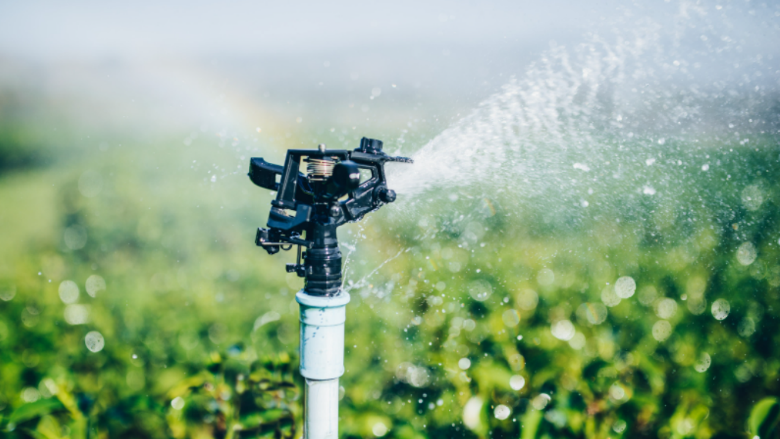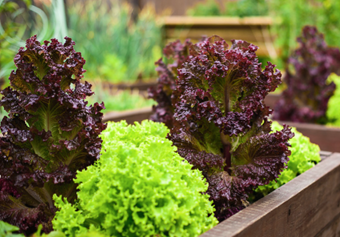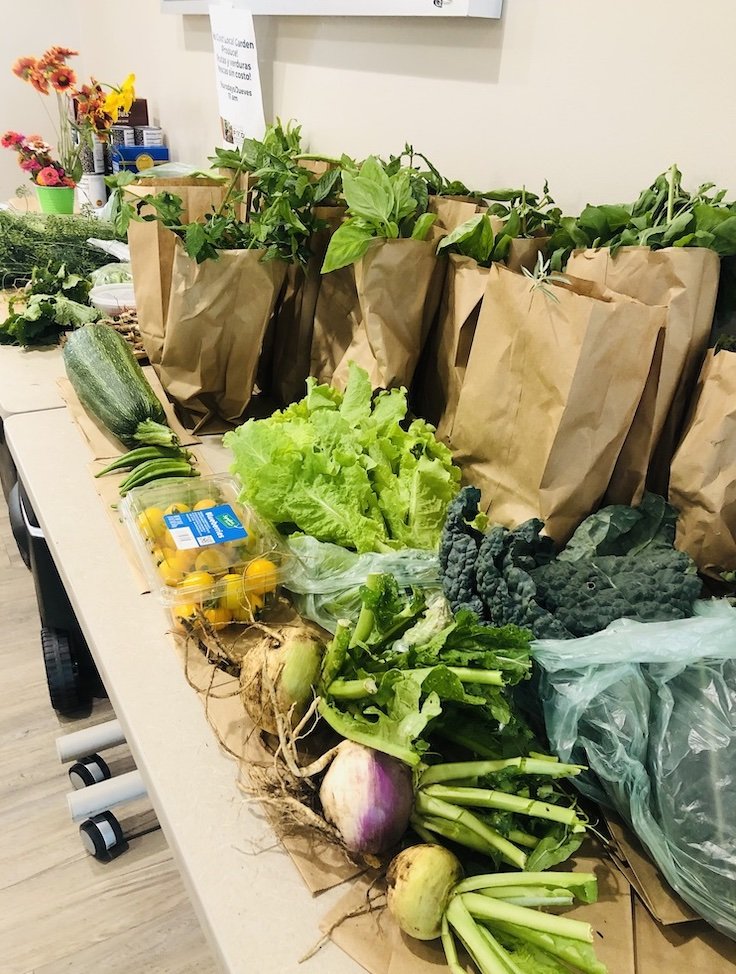Essential Tips for Planting, Support, Fertilization, and Harvesting
Guest Contributor: Cassey Anderson, Horticulture Agent, Colorado State University Extension
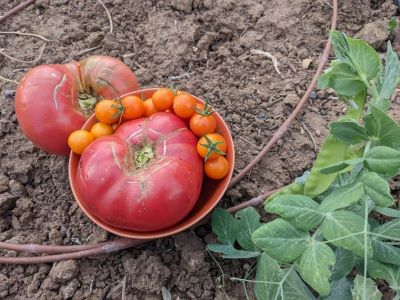
Enhance your tomato gardening skills with these expert tips for planting, support, fertilization, and harvesting from Guest Contributor and CSU Horticulture Agent Cassey Anderson!
June is the time of year, at least here on the Front Range when most gardeners have planted or are just about to plant their tomatoes. Here are some tips to achieve good success from planting to maintenance and beyond!
Determinate or indeterminate? Do you know what you have? Most tomatoes that I see folks growing are indeterminate tomatoes. This means that the plant will continue to vine and grow from the tips until a freeze event. In greenhouse spaces this means that tomato plants can grow for 12, 15, 20 feet! If you don’t want to have the tomato plant that never stops growing, you may seek out a determinate tomato. These are more compact plants that grow to 3-4 feet and push out only a few flushes of flowers and fruit. Determinate plants are particularly nice if you plan to harvest tomatoes for canning, pasting, drying, or preserving. Both will need some type of support, but we’ll get into that soon.
Planting
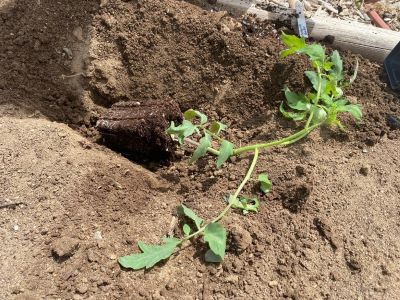
Select tomatoes to plant that are small, about the diameter of a pencil. It’s tempting to buy the biggest tomato seedling that has flowers or fruit on it. This can set establishment back as the plant has to divide resources between growing fruit and growing roots. Remove any flowers or fruit at planting (I know it’s hard!) or select plants that don’t have them yet. Prepare your garden space and harden off your tomatoes by bringing the out in increasing increments over about a week.
Tomatoes are one of the few vegetables in our garden (along with tomatillos) that have a superpower. They can grow adventitious roots along their stems. This means that if you plant the tomato horizontally in a trench in your soil (as pictured) it will produce new roots along that buried stem. Simply remove all but the top 5-7 leaves and plant in a shallow trench. These new roots will sprout from the stem which will create a hardier and happier tomato plant.
There are lots of sites that will recommend putting bone-meal, egg shells, banana peels, or more into the planting hole. However, these are only beneficial if your soil is lacking in those nutrients. If your soil has good nutrients and good organic material (around 4-5%) then these additives are not going to help anything. Issues with blossom end rot are caused by erratic watering and/or cold soils, not by insufficient calcium in the soil. If you’ve had a soil test and it says you are low in nitrogen you could add some nitrogen to the planting hole. We’ll get into more on fertilization shortly.
So, you’ve got your plants in the ground and they’re small and cute and don’t look they could ever cause any trouble. If you selected a determinate plant, you could probably get away with one of those tomato cages sold at your local nursery or garden center. If you have an indeterminate tomato, there’s a good chance it will grow into and out of that cage, so alternatives are good to find.
Trellising
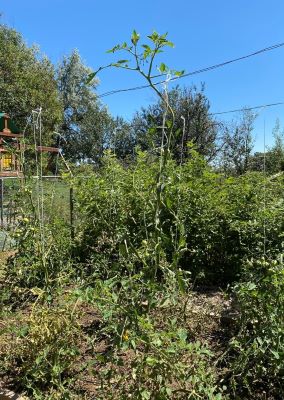
There are SO many great options for trellising or reining in your tomatoes. My current favorite is the single string trellis. For this you need a frame or secure wire above the tomato plant with a vertical string that you plant under your plant. Every few weeks wrap the plant around the string, secure with plant tape or wire and prune to have one central leader. The Florida weave is another great option (search “Florida weave tomatoes site:edu” for some great resources), or growing tomatoes along a hogwire “wall.” You can make tomato cage supports out of concrete reinforcing mesh, these are 4-6’ tall and can hold up against the rigors of a large tomato plant in late August or September. You can even use t-posts as a very solid support structure.
The goal of a trellis or support structure is to keep the tomato off the ground, keeping disease pressure lower, pollination higher, and making it easier to harvest. There is not one right way, or a wrong way and I’ll be honest, I had one year with greatly successful harvests in which my tomatoes were vines along the ground. I did lose a lot more tomatoes to insect and wildlife that year. With any trellis, if you intend to re-use in the following years, be sure to clean up your garden and clean the support structure with a bleach or alcohol sterilizing cleaner at the end of the season to eliminate any pathogens.
Pruning
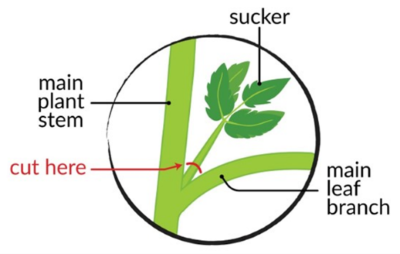
I’ll touch briefly here on pruning as well. Pruning can be done as much or as little as you need for your goals in your garden. Some gardeners swear by removing every single “sucker”, some keep them to get more fruit as they will develop flowers eventually. It’s up to you, but a plant that is pruned at least lightly will have better air flow, lower disease pressures, and be easier to harvest.
Fertilization
Fertilizing tomatoes can be a tricky proposition. Many of us think of our vegetable gardens as an extension of ourselves (we spend so much time there after all!) and so we have a bad habit of anthropomorphizing the plants. Since we as humans eat food every day, surely plants need food on a regular basis as well? Unfortunately, it’s not so simple. This is when I remind you to refer to the soil test that I’m sure each and every one of you have done this spring or last fall. Do you have sufficient Nitrogen, potassium, and phosphorous? If so, you may not need to supplement. If you’re adequate to low, tomatoes can benefit from a light feed at planting, you can fertilize up to 3 times every 2 weeks, and a final feed when the tomatoes have reached about ½ their mature size. So, you may fertilize once in the season, you may fertilize 4 times, but probably won’t need more than that to have success.
Over fertilization of tomatoes can lead to beautiful, lush, green, leafy plants with not a single flower on them. This is because you’ve made such comfortable environment for your plant that it thinks it doesn’t even need to procreate and ensure survival in the next season. A low level amount of stress is good for a plant and its enthusiasm for reproduction!
Harvesting
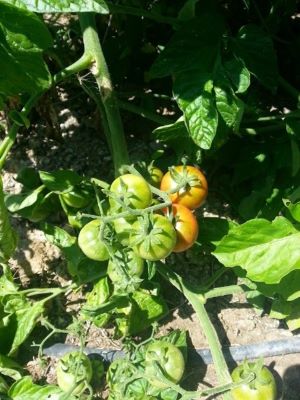
Tomatoes can technically be harvested at any stage, but if you want them to continue to ripen you need to look for “breakers” this is when the blossom end begins to color. If you have selected purple, green, yellow etc. tomatoes they will look a little different to your standard reds. Any that are “pink” can be counter ripened successfully, although the flavor will develop better on the vine than off.
Avoid pulling tomatoes off the plant, this can tear the vine and potentially introduce disease and damage new growth. Instead use as sharp knife, pair of scissors or other cutting tool to clip tomatoes off the plant. Harvest is best performed early or late in the day when intense heat is over.
Of course I’ve only touched the surface of discussions that we could have about tomatoes, if you are curious to know more please reach out to your local county Extension office, or check out www.GrowAndGiveColroado.org for more information.
As always, reach out to your local Extension office with additional questions and for further resources. Happy Gardening!
Gardening in Colorado? Check out Grow & Give www.growandgivecolorado.org and in particular our Colorado Vegetable Guide https://growgive.extension.colostate.edu/colorado-vegetable-guide/ for more crop information on all of the above plants.

What if every gardener planted just one extra plant to share?
One small donation can have a tremendous impact. Just imagine, if every gardener planted one extra plant to share, collectively, we would have an abundant source of fresh, healthy produce available to be distributed to families experiencing food insecurity in our own communities! The free Fresh Food Connect mobile app connects you to a local hunger relief program, then manages and tracks your donations of homegrown produce throughout the season. Download the app today!
